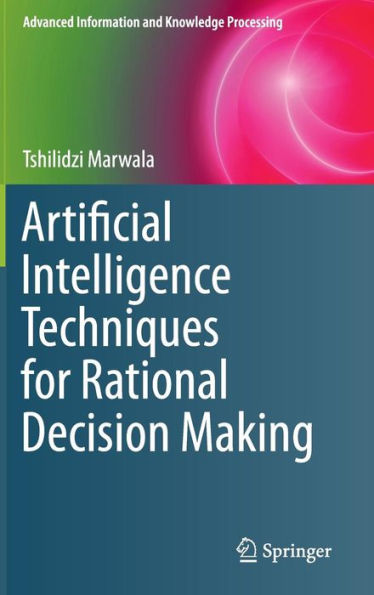Artificial Intelligence Techniques for Rational Decision Making examines and defines the concepts of causal and correlation machines and applies the transmission theory of causality as a defining factor that distinguishes causality from correlation. It develops the theory of rational counterfactuals which are defined as counterfactuals that are intended to maximize theattainment of a particular goal within the context of a bounded rational decision making process. Furthermore, it studies four methods for dealing with irrelevant information in decision making:
• Theory of the marginalization of irrelevant information
• Principal component analysis
• Independent component analysis
• Automatic relevance determination method
In addition it studies the concept of group decision making and various ways of effecting group decision making within the context of artificial intelligence.
Rich in methods of artificial intelligence including rough sets, neural networks, support vector machines, genetic algorithms, particle swarm optimization, simulated annealing, incremental learning and fuzzy networks, this book will be welcomed by researchers and students working in these areas.
Artificial Intelligence Techniques for Rational Decision Making examines and defines the concepts of causal and correlation machines and applies the transmission theory of causality as a defining factor that distinguishes causality from correlation. It develops the theory of rational counterfactuals which are defined as counterfactuals that are intended to maximize theattainment of a particular goal within the context of a bounded rational decision making process. Furthermore, it studies four methods for dealing with irrelevant information in decision making:
• Theory of the marginalization of irrelevant information
• Principal component analysis
• Independent component analysis
• Automatic relevance determination method
In addition it studies the concept of group decision making and various ways of effecting group decision making within the context of artificial intelligence.
Rich in methods of artificial intelligence including rough sets, neural networks, support vector machines, genetic algorithms, particle swarm optimization, simulated annealing, incremental learning and fuzzy networks, this book will be welcomed by researchers and students working in these areas.

Artificial Intelligence Techniques for Rational Decision Making
168
Artificial Intelligence Techniques for Rational Decision Making
168
Product Details
| ISBN-13: | 9783319114231 |
|---|---|
| Publisher: | Springer International Publishing |
| Publication date: | 10/21/2014 |
| Series: | Advanced Information and Knowledge Processing |
| Edition description: | 2014 |
| Pages: | 168 |
| Product dimensions: | 6.10(w) x 9.25(h) x 0.02(d) |
